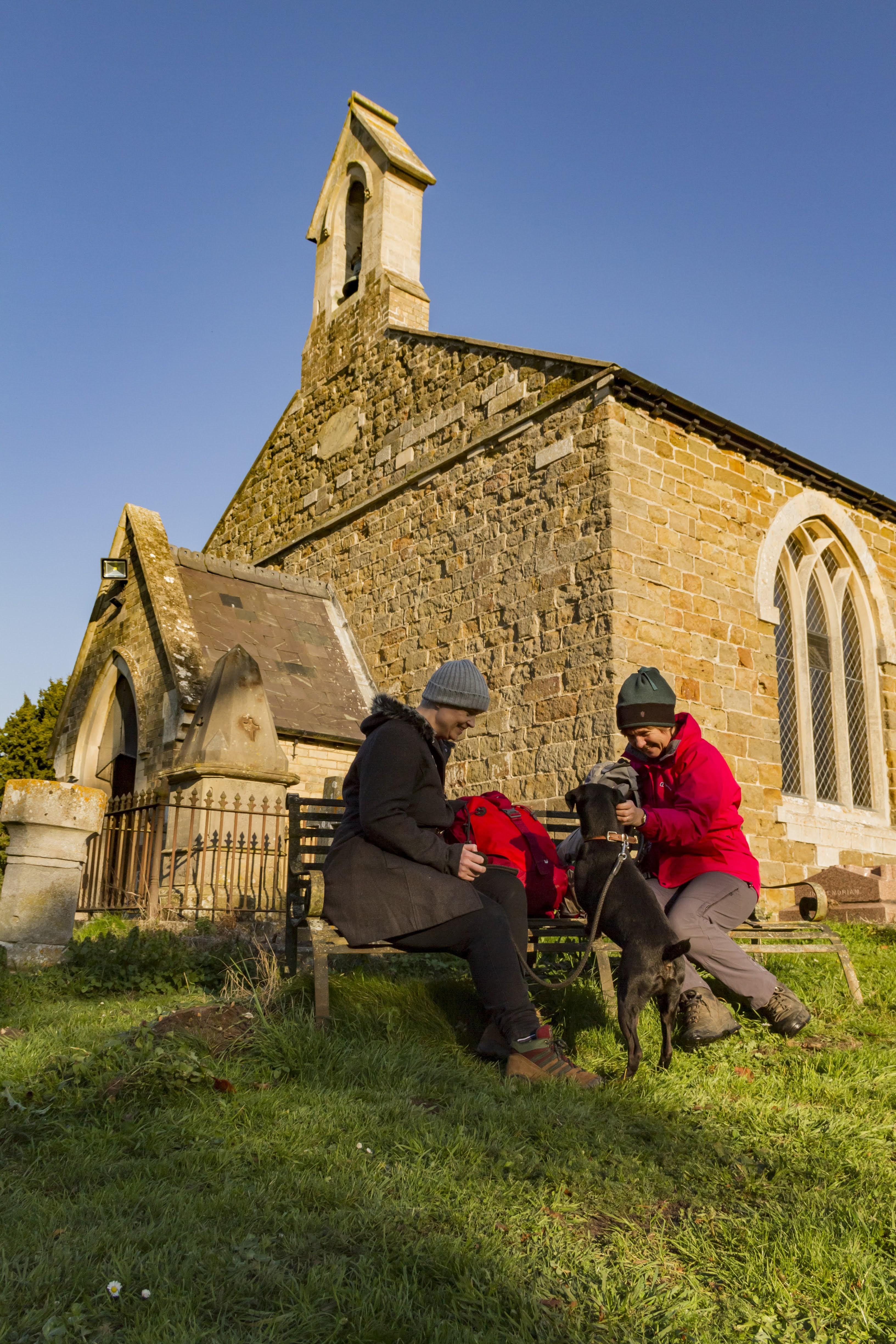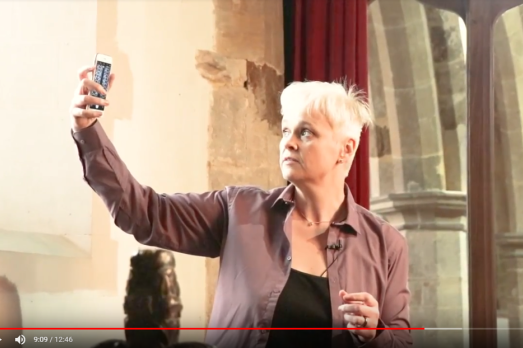
Our expert training
Every year we run a range of training sessions and courses delivered online or in person. Our sessions cover a wide range of topics, from maintenance to tourism and from grants to marketing.
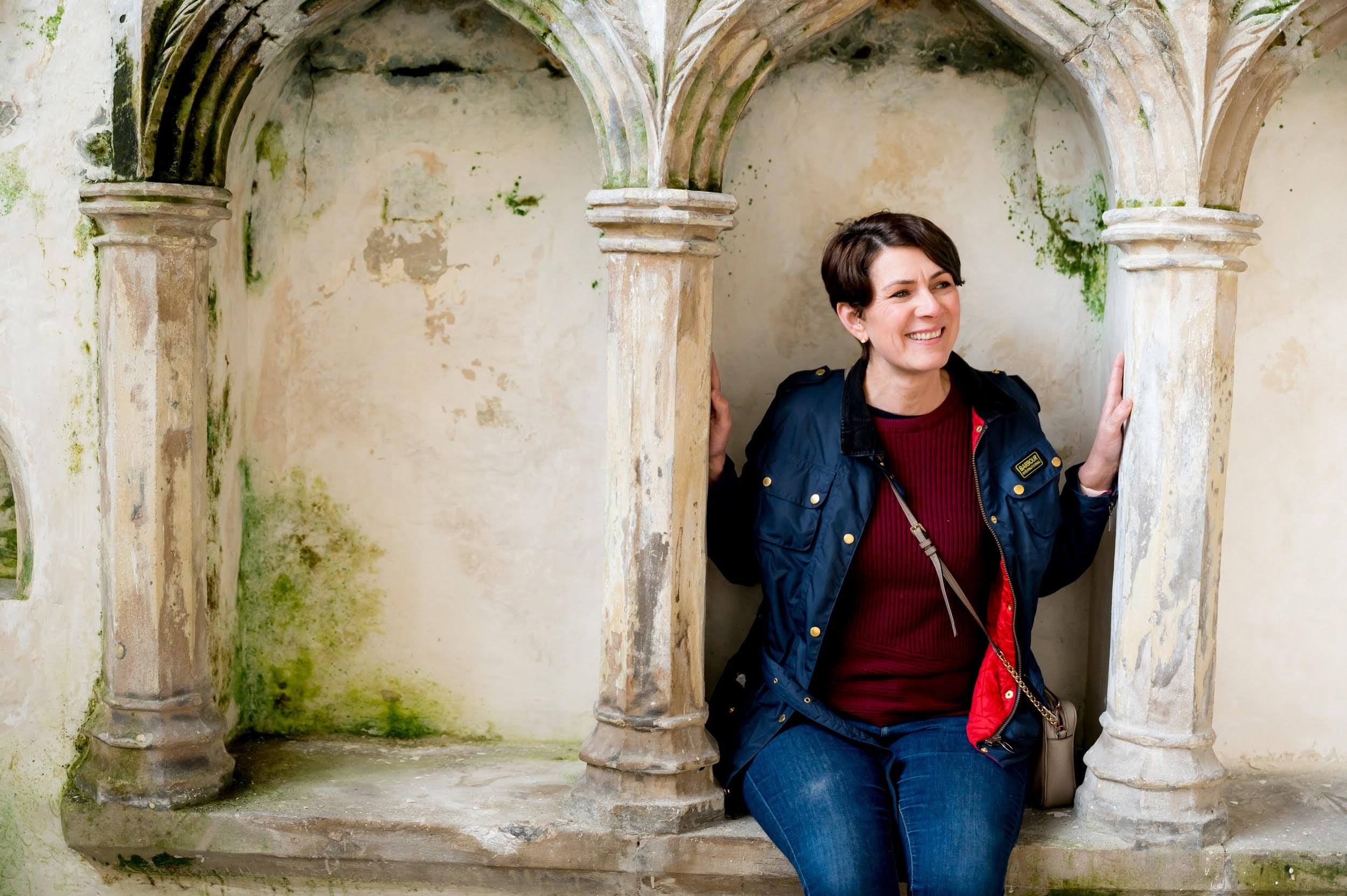
It can be a valuable tool for mission, as well as working with your community and welcoming visitors.
Starting off small and working with what you already have is not only sensible and low cost; it also helps you to work out what will work in your building and community. It means that you can try a variety of things with relatively small outlay of time and money, and see which brings the most engagement, enjoyment, use or income.
Staring small can also help you allay any fears from members of your congregation or community. Using the church for other activities can cause tensions, and easing people into it and letting them see the benefits for themselves, and see that the church is still a living place of worship, can often change their minds.
Once you have decided on a general direction you may want to develop a mission statement or other guiding principle which will underpin all your work. You might even go so far as writing a project plan to share with others, in which you can develop ideas and clearly describe your plans.
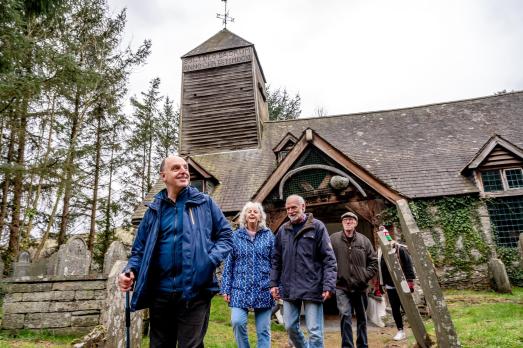
Our guide aims to encourage curiosity about new ways of attracting visitors, inspiring and sharing knowledge, values and experiences. You play a key role in making each visitor experience memorable, whether they come for a moment of quiet reflection, to admire the architecture, or simply to enjoy a slice of cake. This guide will equip you with everything you need to know to make visitors feel at home.
Find out more and download the toolkitOpening your door to visitors is one of the easiest things you can do, with little or no effort. There are, of course, some considerations you should make: about your building, your community and your potential visitors. But there is a huge amount of information and support available, both before and after you open.
Churches, chapels and meeting houses are treasure houses of heritage, history and community. The potential for them to attract visitors and for visits to be enjoyable and worthwhile is huge. There are over 47,000 Christian places of worship in the UK, over 10,000 faith sites of medieval origin, all built for the same reason but with a unique story to tell and a unique experience to offer local people, visitors and tourists alike.
Every single one has some aspect of architectural, cultural or social heritage significance.
Your church, chapel or meeting house should be open for people to visit.
Opening your church and welcoming visitors is not difficult and can be very rewarding. Your church can attract visitors to your area which can boost your income from donations and sales and help the local economy by encouraging people to visit local establishments for lunch etc
All heritage sites need interpretation.
Telling the story of your building and your community in the context of local, regional and national heritage will not only engage visitors but it will inspire your congregation to explore these stories as well.
Guided tours are a brilliant way for volunteers to share their favourite passions about your building and community.
General tours will always be welcomed by most visitors, but those offering specialist knowledge, or access to normally closed areas will be prized by both visitors and local people.
Encouraging children and young people to be interested is vital if we are to pass on the care and welfare of our wonderful church buildings to the next generation with confidence for its future.
Children often come along to events and activities as part of family groups. They may also visit as part of a school tour, or event held at the church such as an annual nativity or carol concert.
Welcoming children can be different from taking adults around the church and it is worth spending time to consider how to do this in a way which will make them feel at home, engage them, and encourage them to come back.
Thinking about who will visit and why will help you to make visits welcoming and enjoyable, and encourage visitors to come back!
Knowing your local area will help you promote local facilities and services to encourage longer stays, additional expenditure and repeat visits. Offering sites in every town and village, churches can add value and contribute to sustainable, authentic community tourism.
When welcoming people to your church, it is vital to remember that they are entering a special place, a living place and a place of prayer. There are many similarities between churches and other heritage attractions, but the spiritual significance of a faith site should not be ignored.
People who don’t go to church often find it difficult to open a closed church door and walk inside. You need to find a way of breaking down those barriers. Once inside, visitors usually expect a church to be something of a sanctuary and a place where they can find peace and tranquillity.
Times Educational Supplement : churches as a special place
Visitors to churches come from all backgrounds, all ages and all nationalities. Your church is a place where visitors can learn about architecture, arts and crafts, and historical events as well as social history. They are keepers of community heritage, traditions and rites that may have been practiced for generations.
People visit churches as part of a wide range of activities, but cultural and heritage activities always rank highly in surveys of visitors or visitors books. Churches can respond to many visitor interests, from casual curiosity, through family history, exploring local heritage, to more serious engagement.
Generally, your visitors will fall into one of the following groups:
There are many things, large and small; simple or more complicated, which churches can do to attract more visitors, to give them a warm welcome, an enjoyable experience and to encourage them to return.
All churches are unique, with different and distinctive features and settings. What is appropriate and realistic in one church may not be the case in another. However, there are a few simple steps which can be undertaken by EVERY church, and you could start by considering the following:
Put yourself in a visitors shoes - would you find your church welcoming?
Two sensible arguments often mistakenly used to keep a church closed are security and cost:
Carefully plan for ease of access; physical, cultural and intellectual. There are nine million people with a disability in the UK and they should not be excluded, make sure that visitors aren't disabled by your attitude and that all possible improvements have been made. Also consider intellectual and cultural understanding of your building, and offering services appropriate to the needs of particular types of visitor.
Through the Roof : churches inclusion
Ecclesiastical Insurance : advice
The reputation of your church is based on the service you offer. Don’t afraid to set high standards for your welcome, guides, interpretation and more. Aspire to deliver excellence and exceed visitor expectations.
Some churches offer refreshments, either at a café run by volunteers or by setting up a hospitality tray (with kettle, teabags and biscuits) for visitors to make their own.
Most churches have some secular activities which can be developed for visitors; perhaps flower festivals, patronal festival open days, brass rubbing, or concerts.
Think laterally; architectural significance alone does not guarantee visitors. Romance, legend, physical situation and downright quirkiness all count towards the potential for attracting visitor interest. Where an academic might marvel at the perpendicular Gothic he or she may also find pleasure in the idiosyncratic.
Interpreting your building for local people and visitors can be incredibly exciting. In the average church, chapel or meeting house there are a huge variety of stories to tell; architectural history, social history, monuments, works of art, your place in national history and much more.
Choosing what to include, and in which type of interpretation can take a lot of thought and planning. But, like in many things, start small, evaluate the response and then develop.
The content and type of interpretation you choose can vary widely, and it’s well worth having a look around some other heritage sites as well as the websites of interpretation suppliers to get some ideas. If you are planning a major interpretation project, and perhaps applying for funding to do so, then writing a fairly general brief for a number of companies to respond to will probably highlight some ideas you hadn’t thought of.
Association for Heritage Interpretation : homepage
Heritage Lottery Fund : interpretation guidance
Big stories and tiny details are equally fascinating so tell them both.
Make sure that all research is thorough and accurate. Don’t just repeat what was in the previous guidebook, it may be wrong.
The most common form of church interpretation is a free leaflet or a guidebook.
We see a huge number, both through visiting churches and submitted with grant applications. Often written several years ago, and perhaps photocopied out of all recognition, they can be a great disappointment. But yours doesn’t have to be this way!
When writing text for an information sheet, guidebook or interpretative panel please bear in mind your audience. Too much text can discourage all but the most interested visitors, and a writer's over enthusiasm may put people off. Try and make text exciting and engaging, more like a guidebook than a history book.
In colour guidebooks include high quality, large, colourful images. Visitors may be unable to take these themselves, and may buy a guidebook as a souvenir as much as for a source of information.
Lastly, also bear in mind some of the problems that reading can present - poor eyesight, low lighting, dyslexia. Very few people are illiterate, but a surprising number have reading problems (eg long sight, bifocal glasses). The average reading age in the UK is 13.
Open University : How to write a church guide
More and more churches are exploring the use of new technology to help visitors understand their building.
Using technology in an appropriate way for your church can be a very cost effective way of bringing an exciting new level of understanding, and can even help to attract visitors by reaching new people in new ways.
Before the visit:
During the visit:
After the visit:
ChurchBuild : Aurasma video
Holy Trinity Micklegate : Micklegate Monks

Every year we run a range of training sessions and courses delivered online or in person. Our sessions cover a wide range of topics, from maintenance to tourism and from grants to marketing.

We also work with partners who offer training, advice and support. Here we will try and list as many as we can that have online sessions and videos.
It’s hard to underestimate the current interest in local heritage. Most churches can tap into all aspects of this, and benefit from visitors and volunteers as a result. From family history and social heritage to architectural splendour and exploring ancient landscapes, your church probably has it all.
Understanding places of worship and heritage buildings are just steps on the road to understanding YOUR church, chapel or meeting house, which in turn helps you to care for and use it to meet the needs of your community whilst protecting and enjoying its rich social and architectural heritage.
Besides being fascinating, understanding your building will really help you to make the most of it whilst enjoying looking after it for generations to come.
Church of England : understand your church
If you are just starting your research, there are obvious places to start for basic information.
It is important that you make a clear and detailed record of what you find out, to help those who will follow you in caring for your building. You could save them valuable time and even give them information which they might not be able to find for themselves.
It’s worth reading all the original source material you can find, including the official listing if your church is listed. If your church is old enough, check your village or town’s entry in the Domesday Book. Looking at the original entry can really fire your enthusiasm for finding out more! Another source of information are Pevsner’s Buildings of England books. You will be able to find your local volume in your local library or online.
Historic England : search the list
Historic Environment Scotland : search for a listed building
National Monuments Record of Wales (NMRW) : site search
Northern Ireland Department for Communities : buildings database
Domesday Book Online : contents
Over time your church will have undergone several surveys and studies, and should continue to do so.
There will definitely have been regular inspections by an architect, but there could also be specialist studies of particular aspects of the building or objects of particular interest. You will probably find these in the church safe or cupboards, or with clergy or churchwardens, although there may also be copies in your local archives of diocesan records office.
The National Monuments Record is the public archive of Historic England. It includes historic photographs, architectural and archaeological reports, plans and other items related to the historic environment of England. You may be able to find records relating to your church or village / town there.
Over recent years your church may have had a church survey produced by volunteers from the National Association of Decorative and Fine Arts Societies. You can check which churches have been surveyed on their website.
The use of drones to assist with surveys of church buildings has increased in recent years. They can also be used to take brilliant images of your church, whilst up there doing a survey!
Ask to see the church contents register, or terrier. The modern document will tell you a lot about the current building and its furnishings and fittings. You may also be able to find copies of historical registers in your local archives, or via diocesan records offices and perhaps even original and/or development plans, many Victorian and 20th century plans are online thanks to the Incorporated Church Building Society.
Lambeth Palace Library : collections online
If you are allowed, have a look through the church safe and cupboards. There might be hidden gems of old guidebooks and contents registers hidden in the back. You could also ask members of the community to loan you any old guidebooks or leaflets they have, or check at your local archives for copies.
Interpreting your building for local people and visitors can be incredibly exciting. In the average church, chapel or meeting house there are a huge variety of stories to tell; architectural history, social history, monuments, works of art, your place in national history and much more.
Choosing what to include, and in which type of interpretation can take a lot of thought and planning. But, like in many things, start small, evaluate the response and then develop.
The content and type of interpretation you choose can vary widely, and it’s well worth having a look around some other heritage sites as well as the websites of interpretation suppliers to get some ideas. If you are planning a major interpretation project, and perhaps applying for funding to do so, then writing a fairly general brief for a number of companies to respond to will probably highlight some ideas you hadn’t thought of.
Association for Heritage Interpretation : homepage
Heritage Lottery Fund : interpretation guidance
Big stories and tiny details are equally fascinating so tell them both.
Make sure that all research is thorough and accurate. Don’t just repeat what was in the previous guidebook, it may be wrong.
The most common form of church interpretation is a free leaflet or a guidebook.
We see a huge number, both through visiting churches and submitted with grant applications. Often written several years ago, and perhaps photocopied out of all recognition, they can be a great disappointment. But yours doesn’t have to be this way!
When writing text for an information sheet, guidebook or interpretative panel please bear in mind your audience. Too much text can discourage all but the most interested visitors, and a writer's over enthusiasm may put people off. Try and make text exciting and engaging, more like a guidebook than a history book.
In colour guidebooks include high quality, large, colourful images. Visitors may be unable to take these themselves, and may buy a guidebook as a souvenir as much as for a source of information.
Lastly, also bear in mind some of the problems that reading can present - poor eyesight, low lighting, dyslexia. Very few people are illiterate, but a surprising number have reading problems (eg long sight, bifocal glasses). The average reading age in the UK is 13.
Open University : how to write a church guide
More and more churches are exploring the use of new technology to help visitors understand their building.
Using technology in an appropriate way for your church can be a very cost effective way of bringing an exciting new level of understanding, and can even help to attract visitors by reaching new people in new ways.
Before the visit:
During the visit:
After the visit:
ChurchBuild : Aurasma video
Holy Trinity Micklegate : Micklegate Monks
Informative and entertaining, guided tours can introduce your visitors to stories and details of your church in a very personal and engaging way. They give you chance to interact with visitors, and share much more than can be covered in a guidebook or display panel. They also give your volunteers chance to research and share the stories they love about your building, its people and its place in history.
Nicole Deufel : what makes a good guided tour
In 2021, Strabane Church of the Immaculate Conception in County Tyrone began an urgent repair project at their Victorian Grade B+ listed building and through it grew a project to create a museum inside it, telling the history of the building and those who have used it.
Find out what they did and how : How to set up a museum in your church
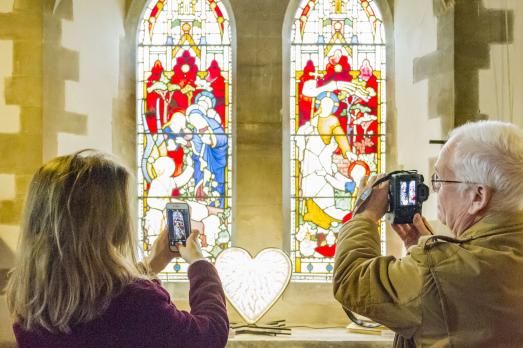
A picture is worth a thousand words. Watch our four short training films to help you take and edit amazing photographs of your church.
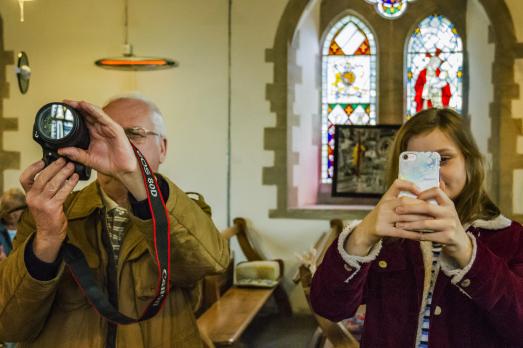
If a picture speaks 1000 words, imagine what a video is worth. Watch our four short training films to help you take and edit brilliant short films of your church.
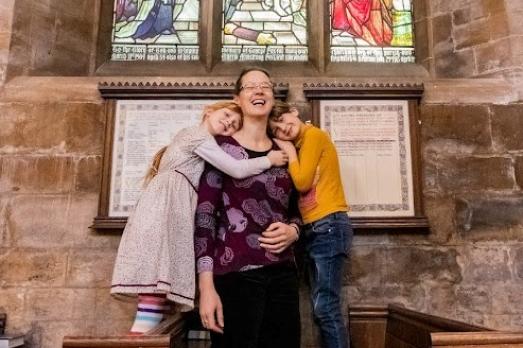
Find out about working with The Arts Society to develop a trail of discovery. Free to you, they will work with your volunteers to develop children's, memory and / or town trails.
Exciting and engaging events are a great way of attracting and welcoming new people to visit, or of encouraging those who have been before to return for something new. They can be large or small, aimed at a particular group or more general, and be free to organise or considered an investment to encourage donations.
The most important thing to consider is your audience; who are they, where will they come from, what will they want to see and do?
It is also a good idea to have an end result in mind (eg. to welcome 500 people or to raise £500). Try and make sure that everything you do will help you meet your target.
Ecclesiastical Insurance : planning church events
GOV.UK : organising a voluntary event
There are several large national and regional events which your church could be a part of. These will give you a taste for something big, whilst being able to rely on some central organisation and publicity. However, don’t underestimate the number of local people these events will attract, and make sure you promote the event in your area and welcome them too.
Heritage Open Days : get involved
Ride+Stride : near you
Caring for God’s Acre : love your burial ground week
If you would like to offer your church or other space to other users then you should have a formal agreement with those users to protect you and your building.
The type of agreement you need will depend on the type and scale of use, ranging from another organisation using part of the building for long periods of time or installing a permanent structure, to singular or regular lettings and one off use for a more shared event (perhaps where a band holds a concert but the church sells tickets).
If you are entering into a long term agreement, or considering anything which will entail structural or decoration work to your building you should check with your relevant building advisers at Diocesan, District, Synod or national level at an early stage and certainly before you enter into any commitments.
Ecclesiastical Insurance : hiring church premises to organisations
You could find other ideas to use in our '50 things to do in a church' which celebrates the many and diverse uses of church buildings and asks the public to share their favourite things to do in a church or chapel. As part of the campaign, Michael Palin explained why finding peace and quiet in a church is important for him.

Whether they are having a day out, on holiday or coming from further afield, today's visitors and tourists want something really special. We looking forward to working with you to help create memorable Experiences for visitors to take home, remember and share with friends and family.
Find out more